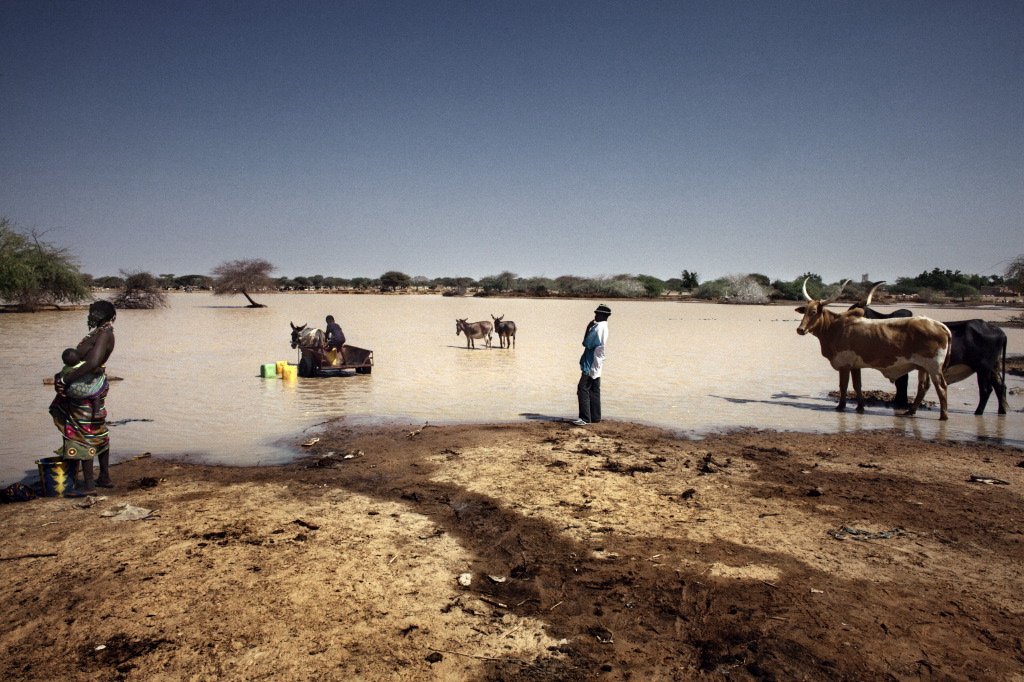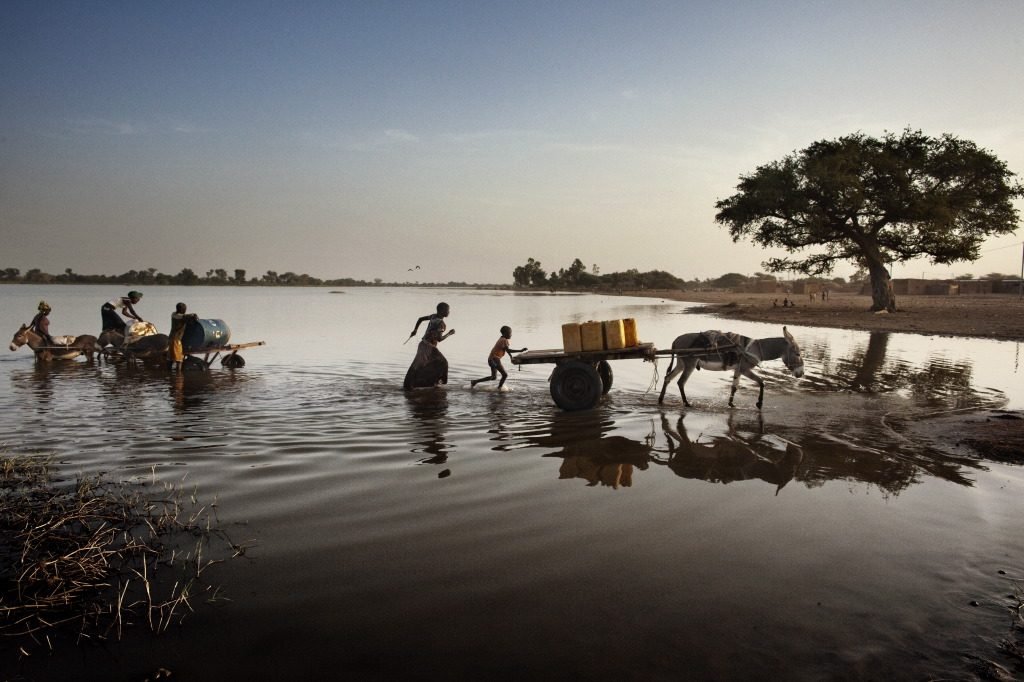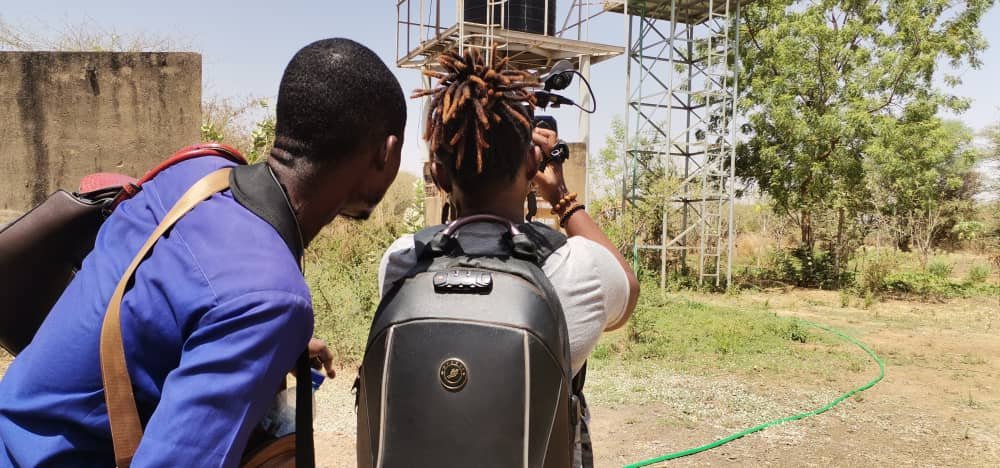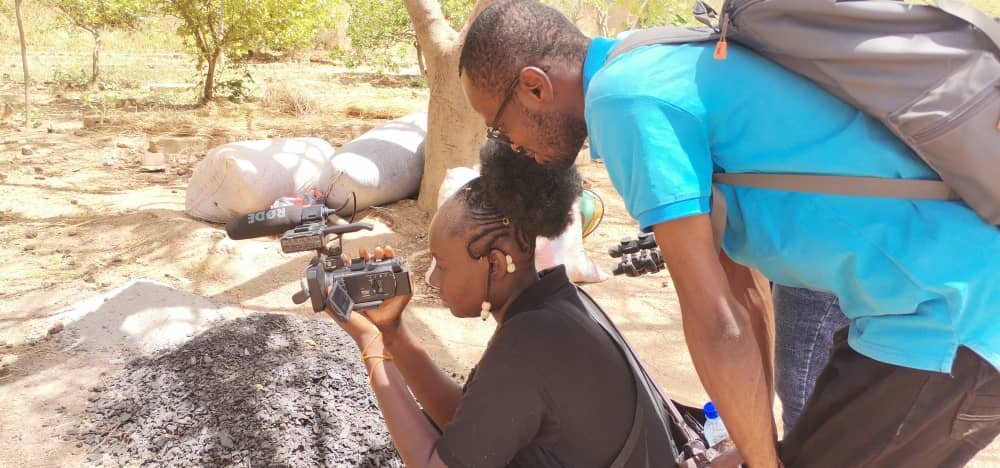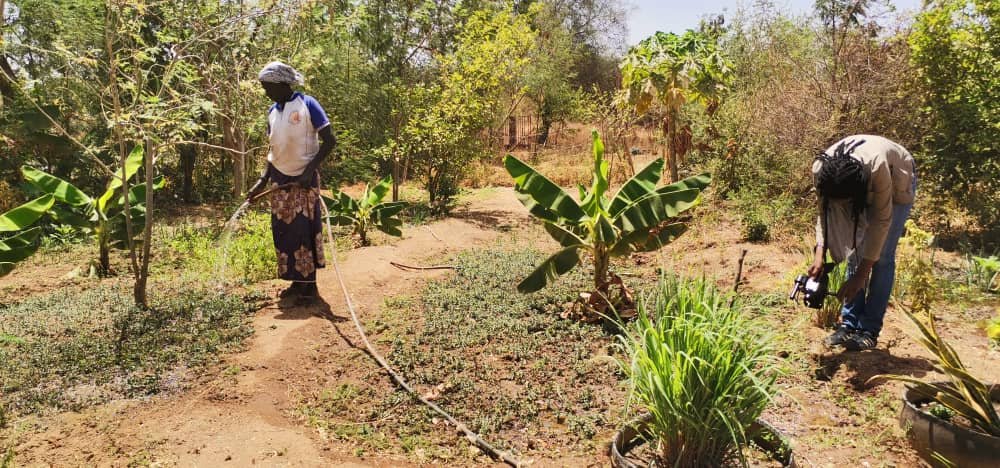The Sahel’s climate reality and opportunities from a Burkinabé activist’s perspective
By: Tewende Emmanuel Sawadogo
A DEEPER LOOK INTO THE CLIMATE SITUATION IN THE SAHEL
Climate and environmental issues are now being discussed around the world; the climate emergency facing the planet leaves no one indifferent. Around the world, the countries of the Sahel are experiencing the full effects of climate change, making them the most vulnerable. According to estimates by several climate experts and analysts, they are among the most threatened areas on the planet. Aware of this ongoing degradation, many influential young people in their communities are mobilizing around associations with initiatives aimed at climate resilience and environmental restoration.
UNDP/ Freya Morales
THE SAHEL AT THE HEART OF CLIMATE ISSUES
The Sahel is the transitional space separating the Sahara desert in the north and the Sudanese territory in the south. It is a geographical area of 3.053 million km2 of grazed landscape whose density decreases from south to north. The Sahel, however, is experiencing significant changes in terms of climate variations. Indeed, several climate analysts and experts believe that the Sahel will probably be one of the areas most affected by the consequences of climate change.
According to the Notre Dame Global Adaptation Initiative (ND-GAIN), which examines countries’ vulnerability to climate change, all of the Sahelian countries are ranked among the 20% most vulnerable and least prepared for climate change - and Niger, Chad and Mali are among the 10% most at risk.
Resilience in face of adversity: the challenges of the climate crisis in the Sahel
As previously explained, the Sahel is one of the most vulnerable areas to the impacts of climate change in the world. Populations in the area have been facing droughts (caused by reduced rainfall), soil erosion, and flooding almost every year for several decades. The desert is advancing, largely due to the excessive cutting of wood. Wood is regarded as an important resource by Sahelians: according to a study conducted by the French Development Agency in the Sahel, wood remains the main cooking fuel used by more than 90% of households. As a result, Burkina Faso, Mali, and Niger lost nearly 15% of their forest area between 2000 and 2020.
These impacts pose huge challenges for people. These range from the need to adapt agricultural methods in the face of climate change (and adopt practices like agro-silvo-pastoral land management), to a lack of access to drinking water, and an increase in diseases linked to climate shocks. It was predicted by The Intergovernmental Panel on Climate Change that agricultural yields will fall by 20% each decade in the 21st century in many areas of the Sahel.
In Burkina Faso, the national economy heavily depends on the agro-pastoral sector and the exploitation of natural resources found in its biological diversity. In fact, according to official figures, agriculture makes up 35% of Burkina Faso’s GDP and employs more than 82% of the working population. All these sectors, which represent its main source of economic viability, are experiencing a decline in yield due to the impact of climate change -- in particular the rise in temperature and changes in precipitation. In response, the countries of the Sahel, especially Burkina Faso, are putting in place policies at the national level to remedy it.
This is the case, for example, of the Burkina Faso National Climate Change Adaptation Plan (PNA) adopted in 2015, which takes into account several aspects of climate resilience development and is in line with the UN Framework Convention on Climate Change. Moreover, NGO interventions and local initiatives undertaken by environmental activist associations to strengthen climate resilience are also taking place.
CLIMATE IN THE SAHEL: AN OPPORTUNITY FOR THE PEOPLE
The climate of the Sahel area is also an opportunity for its people. They can develop initiatives to adapt and even mitigate the threats they face. The main asset of the Sahel is the sun, which is a major source of clean energy that can power all households in both rural and urban areas. Its relief is also a great asset because it supports the production of other clean energies such as the wind turbine with the high plains, hydraulics with these large rivers that have a stable current throughout the year. The Niger River, for example, is of great importance to the area.
The practice of breeding is also experiencing a boom thanks to the tropical temperature. Livestock farming is one of the leading income-generating practices for the Sahelians. According to the Organization for International Co-operation and Development (OECD), livestock farming is practiced by nearly 80% of rural families in the Sahel. In addition, the area has two seasons, allowing populations to opt for various cultural practices depending on the season and inputs. As a consequence, populations remain mobile throughout the year in seasonal and off-season agriculture. Moreover, the cultural and tourist riches [associated with the environment] can contribute greatly to the economic development of the region’s countries. It is therefore necessary to undertake a rational management of biodiversity and encourage those working for its conservation.
Burkina Faso / Witness Image / Luca Catalano Gonzaga
The Sahel has a poor representation in terms of biodiversity, unlike other regions of the continent. Nevertheless, the Sahel contains very rare features and potentialities that feed the ecosystem. This peculiarity of species contributes to the enrichment of the flora and fauna of the tropical forests of Africa as a whole. Niger, for example, is home to several wild species such as addax, oryx, ostriches, Gazelle and the West African giraffe, which are also species classified by the IUCN International Union for Conservation of Nature as endangered. This reality calls on the general population and direct actors, particularly specialists, to address the issue of more rigorous governance of biodiversity and its components.
There are also monuments, animals, forests and waterscapes which are considered sacred and, therefore, important to local culture. Local actors must be encouraged to be part of this dynamic and their efforts to address climate challenges must be recognized. There is also a need to communicate more about examples to follow, such as Yacouba Sawadogo, who was awarded the “Alternative Nobel Prize” in 2018 for his commitment against desertification in northern Burkina Faso and honored by the United Nations as the “champion of the earth” in 2020.
To pave the way for better solutions, it is important to have in-depth interactions on climate realities with the most affected local populations.
Furthermore, to better understand the climate situation in the various localities of the Sahel, it is wise to listen to the views of the people most affected by climate and biodiversity crises. This approach allows decision-makers to understand real needs and difficulties, and provide adequate solutions to the problems experienced by local people. Consequently creating a sense of involvement amongst local communities, and incentivising them to propose their own local solutions which can then be improved upon by specialists.
THE YOUTH’S INCREASED INVOLVEMENT IN THE SAHEL’S CLIMATE EMERGENCY
The climate emergency is a concern for all. Having become aware of how heavily affected they will be, as well as the consequences of the deterioration of the environment in the near future, the youth of the Sahel refuse to be on the sidelines of the struggle. In recent years, young people have become more involved in community initiatives made up of young people committed to preserving the environment. However, they are still a minority and therefore the inclusion of the youth in state protection policies remains weak. Nonetheless, it is up to young people to advocate at all levels to be heard by the authorities. They also need to make the various social strata aware of the threats the planet is facing, especially in the Sahel. In order to have a meaningful influence in the development of climate and environment-related policies and programs, young activists urgently need to become field ambassadors responsible for informing other young people and convincing them to engage.
Festival Alimenterre / Burkina Faso / Association des Jeunes Entrepreneurs au Burkina en AgriBusiness (AJEBAB)
If we take a look at the youth organizations and consortia in the Sahel region that already exist, they both serve as reference and give weight to the struggle. For example, we have ACT ON SAHEL and Jeune Voix du Sahel, which bring together young climate justice activists from Burkina Faso, Mali, Niger, Chad, among others. Burkina Faso has the National Youth Coordination for Environment and Climate (CONAJEC), the National Youth Parliament for Water (PNJBE), the Burkina Youth Biodiversity Network (BYBN)and the Association of Young Energy Actors (JAE). They are strongly active and have a significant influence on the different communities of the Sahel.
A LOOK INTO THE JOURNEY OF A CLIMATE ACTIVIST
Tewende Emmanuel Sawadogo
Thanks to my profile as a journalist and my young age, I can make a considerable contribution to cope with the climate hazards. As a young leader conscious of the climate emergency, I decided to join other young people in my country –and around the world– in challenging consciences about the danger our planet is facing through climate activism. My focus on environmental issues began in primary school in 2007 through school reforestation projects supported by a Burkinabe NGO called Association pour la Recherche et la Formation en Agroecologie (ARFA). Over the years, my commitment has intensified.
In addition, I am a novice journalist who specializes in environmental issues. Journalists play a leading role in the daily life of people by informing them about the news in various fields.
The reason why Sahelians lack meaningful commitment to the fight against climate change is, for the most part, due to ignorance. In other words, they do not have sources of information providing data on subjects related to the environment.
By taking an interest in environmental and climate issues, I work in a specialized field. I produce and disseminate information related to climate change to increase general understanding, present the challenges, and encourage the implementation of pragmatic actions that can alleviate the problems or risks related to climate change. Moreover, journalism is not only about informing, but also about sensitizing and educating people while proposing solutions to bring about change in society. It is, therefore, necessary to have media and journalists involved in raising awareness on climate issues to strengthen the fight and move towards a positive transformation of our societies in terms of environmental protection.
8billion / filmmaking workshops of climate solutions



